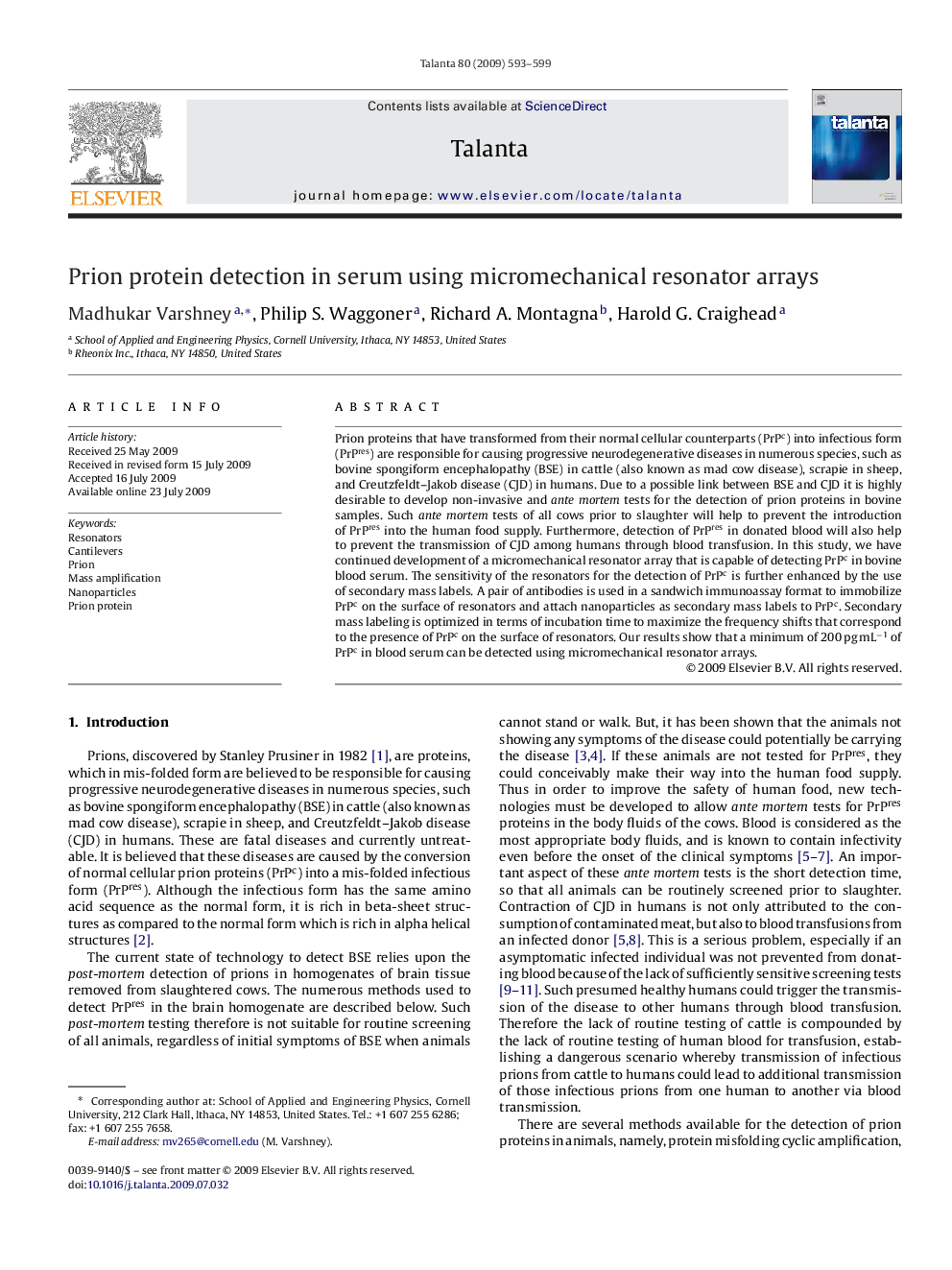| Article ID | Journal | Published Year | Pages | File Type |
|---|---|---|---|---|
| 1246734 | Talanta | 2009 | 7 Pages |
Prion proteins that have transformed from their normal cellular counterparts (PrPc) into infectious form (PrPres) are responsible for causing progressive neurodegenerative diseases in numerous species, such as bovine spongiform encephalopathy (BSE) in cattle (also known as mad cow disease), scrapie in sheep, and Creutzfeldt–Jakob disease (CJD) in humans. Due to a possible link between BSE and CJD it is highly desirable to develop non-invasive and ante mortem tests for the detection of prion proteins in bovine samples. Such ante mortem tests of all cows prior to slaughter will help to prevent the introduction of PrPres into the human food supply. Furthermore, detection of PrPres in donated blood will also help to prevent the transmission of CJD among humans through blood transfusion. In this study, we have continued development of a micromechanical resonator array that is capable of detecting PrPc in bovine blood serum. The sensitivity of the resonators for the detection of PrPc is further enhanced by the use of secondary mass labels. A pair of antibodies is used in a sandwich immunoassay format to immobilize PrPc on the surface of resonators and attach nanoparticles as secondary mass labels to PrPc. Secondary mass labeling is optimized in terms of incubation time to maximize the frequency shifts that correspond to the presence of PrPc on the surface of resonators. Our results show that a minimum of 200 pg mL−1 of PrPc in blood serum can be detected using micromechanical resonator arrays.
